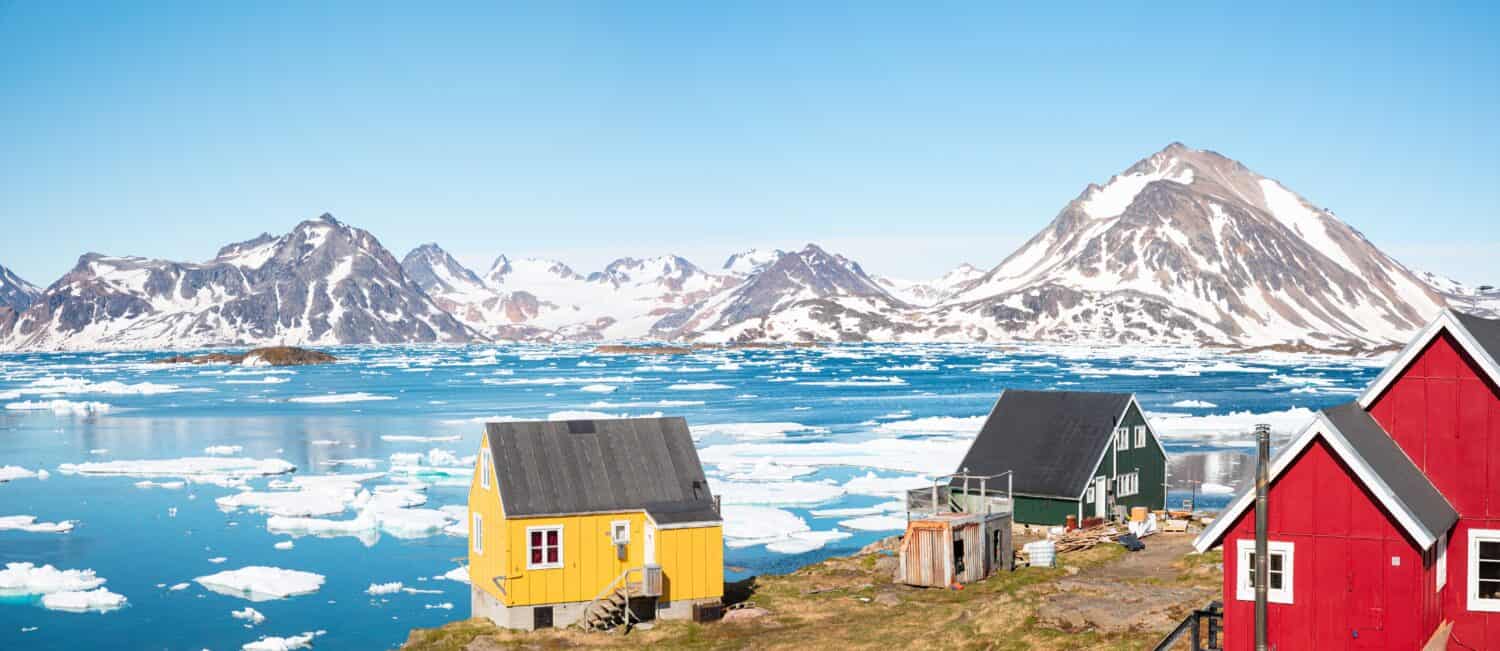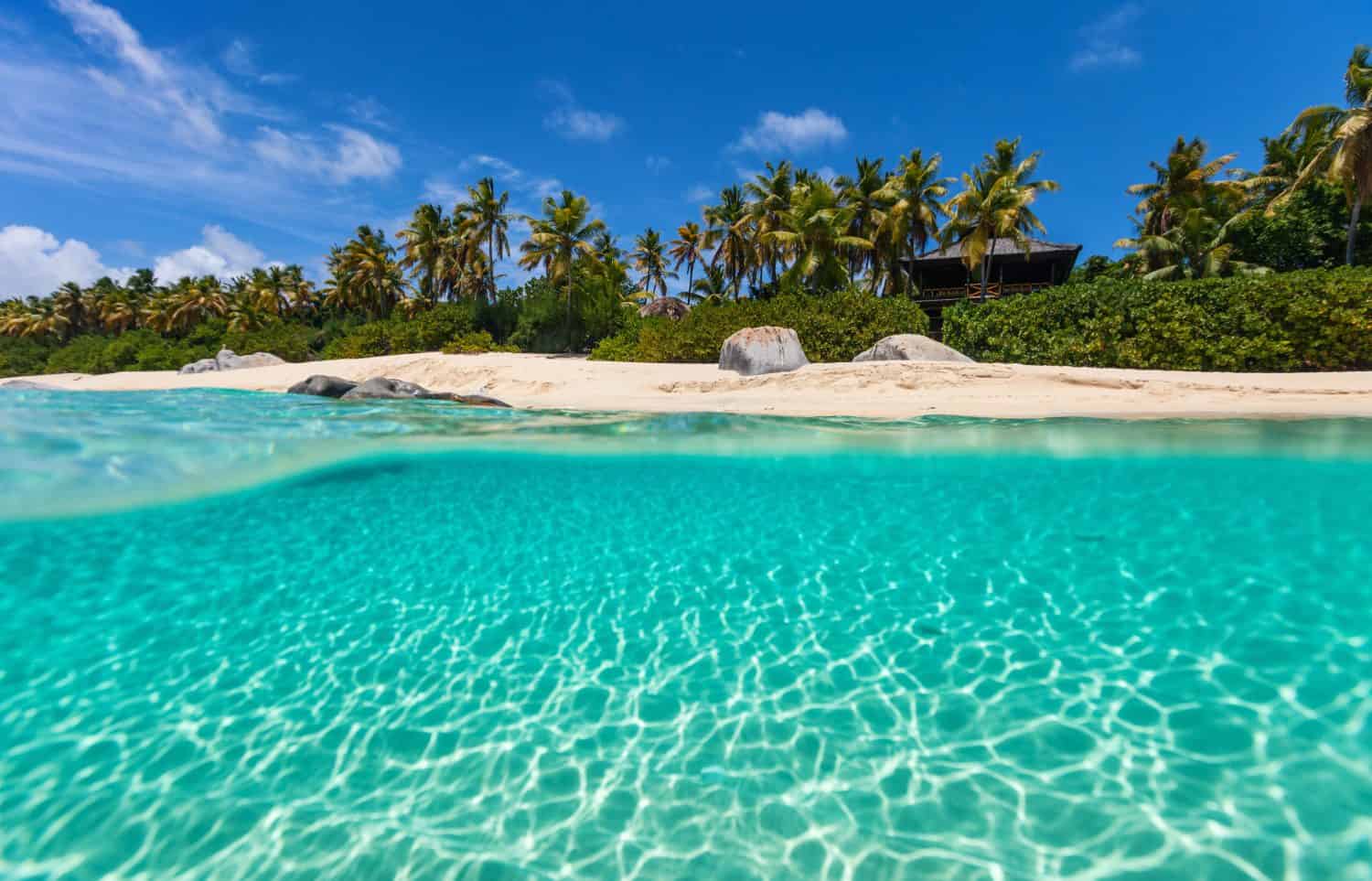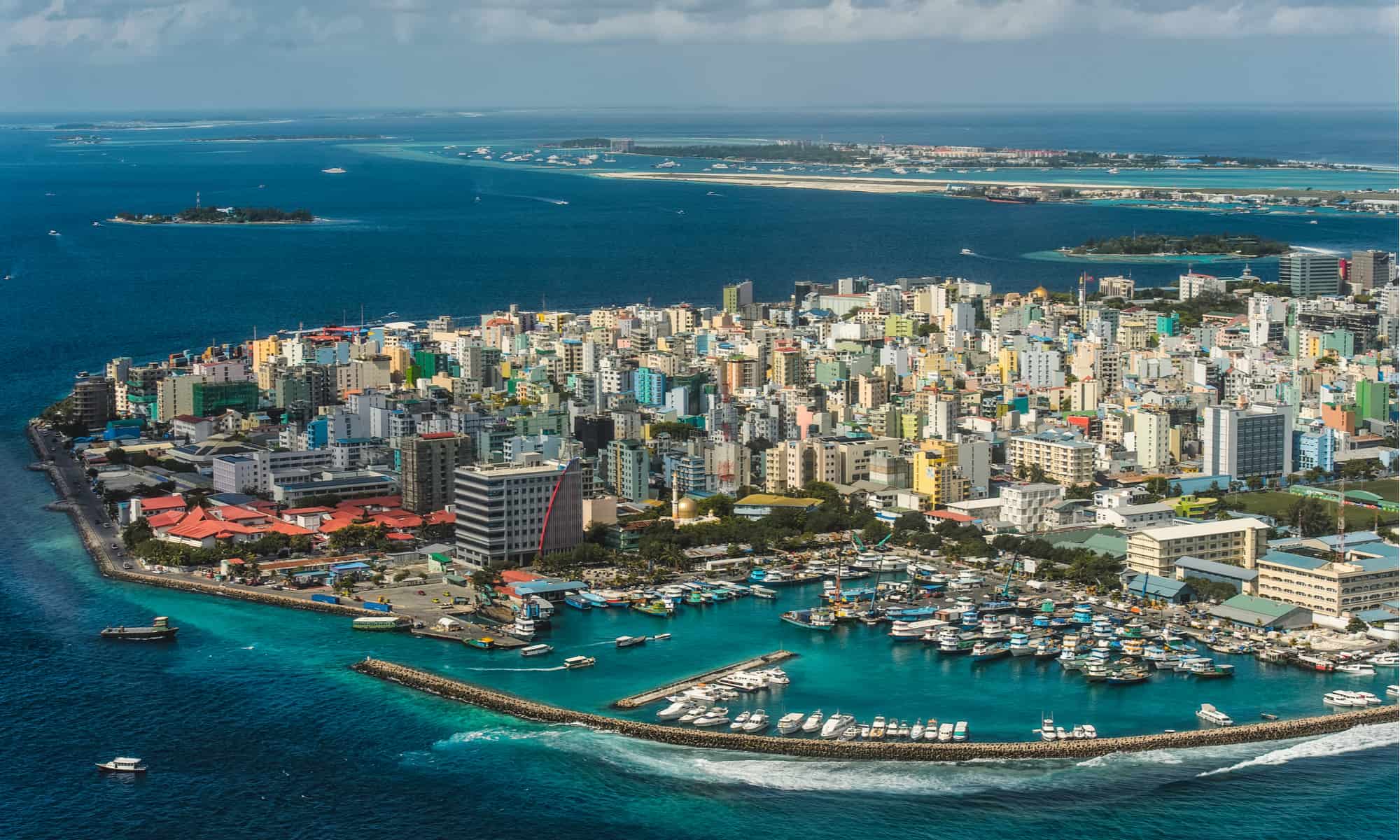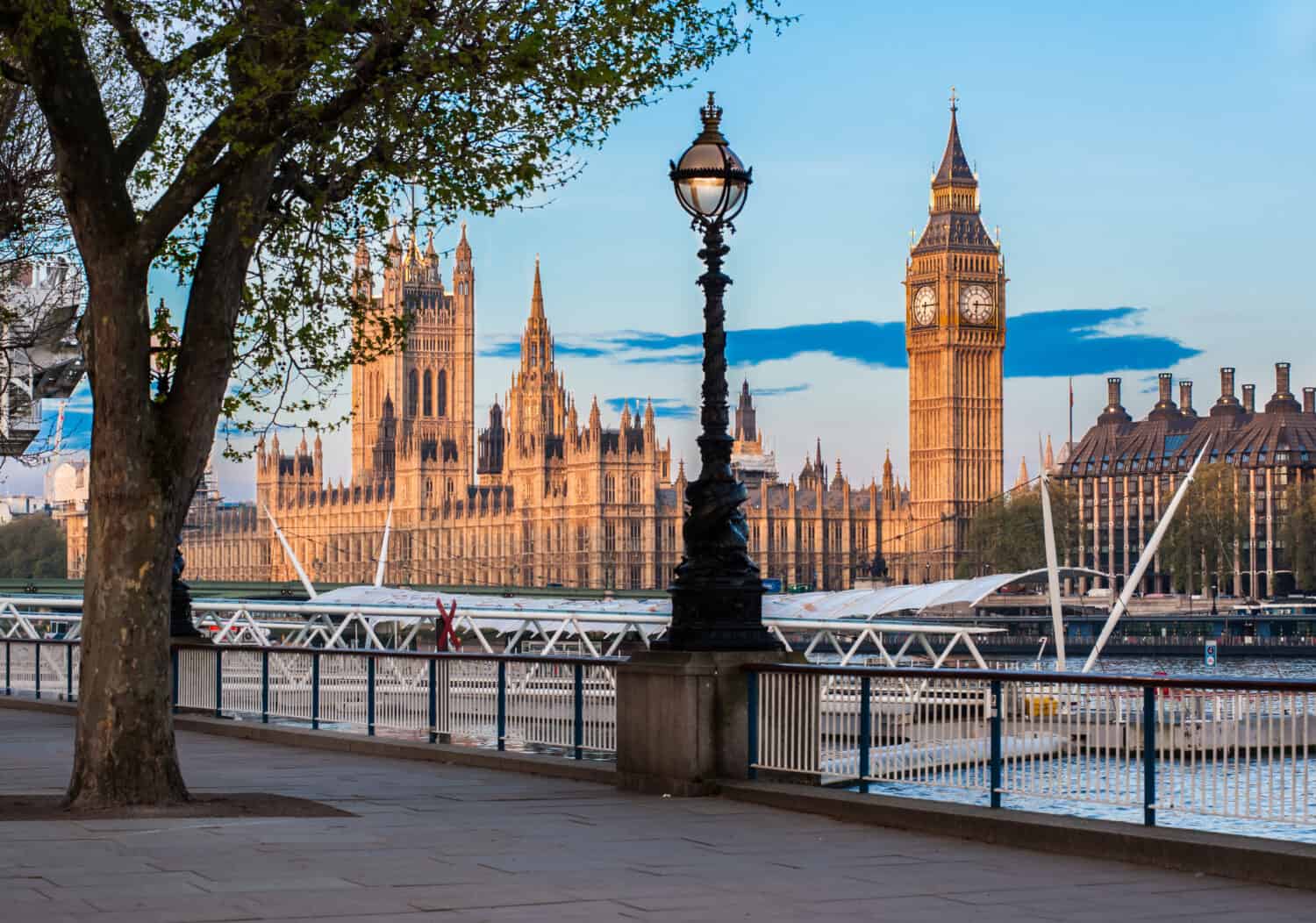Schoolchildren in the United States learn about the historical expansion of the country, often with an emphasis on its heroic process of building a great nation. A lot of young people grow up playing empire-building board games like Risk or computer games like Civilization. So, it’s not surprising that some Americans wonder whether the country will ever acquire more territory or add more states. Join us as we look into what other countries could become future American states.
A Problematic Question

Many Americans think their country is the best in the world.
©Andrew Angelov/Shutterstock.com
There are a lot of problems when we ask if any countries will join the United States as new states.
It Doesn’t Happen
First of all, that rarely happens in world history, even in our own history. Yes, Texas and Hawaii were independent countries that requested annexation. But they were heavily settled by Americans first, who then wanted the place they lived to join the country. Today, the trend is for large countries to split up, like the Soviet Union or Yugoslavia.
It Undervalues Other Countries
Secondly, the question undervalues other countries, their unique cultures, histories, and what they contribute to the world. Other countries would not want to join the U.S. any more than most Americans would want to join another country. People around the world highly value self-determination and resist being colonized.
The U.S. Doesn’t Want Disruptive Change
Third, if the United States annexed whole countries, it would make Americans responsible for their defense, social services, and infrastructure development. The whole population of that country would become U.S. citizens, able to move freely to any of the other 50 states. Tens of millions might migrate to the mainland, creating crowded conditions in many cities. Heavily populated new states would dominate U.S. politics as well. If the Philippines became a state, for example, 25% of the U.S. Congress would be elected there. These kinds of changes would make many current American citizens quite unhappy.
Even though it is extremely unlikely, we will explore some groups of countries that may be “less unlikely” than others to pursue statehood.
Current U.S. Territories

Residents of Washington D.C. cannot elect members of Congress.
©iStock.com/SeanPavonePhoto
By far, the most likely places to become future states of the United States are the country’s current territories.
- Puerto Rico: A territory since 1898, Puerto Rico has voted several times on statehood. In 2020, 52% of the population voted for statehood. The process might go forward more quickly if a larger percentage of the population were in favor of it.
- Washington, D.C.: This federal district is home to 713,000 people who do not have full representation in Congress.
- American Samoa, Guam, and the Northern Mariana Islands are all strategically important Pacific Island territories of the United States.
- U.S. Virgin Islands: The United States purchased these Caribbean resort islands from Denmark.
The obstacles to statehood are on the U.S. side more than on the territories themselves. U.S. powerholders fear that voting patterns in the new states would disrupt the balance of power between the political parties. They also want to avoid increased spending on federal social services. And finally, language and cultural differences create concerns about whether these areas can be successfully culturally assimilated.
A Territory On the U.S. Wish List

Greenland’s current economy is based on fishing.
©muratart/Shutterstock.com
While the U.S. generally does not want new territories, Greenland is a big exception. An enormous Arctic island, this possession of Denmark has a population of only about 56,600 people. The economy is based on fishing. The United States has proposed purchasing it several times, but Denmark and the residents of the island have shown no interest in changing their current status. Why do Americans want it? Geographically, it is in a forward position for ground-based monitoring of Russian missile launches and activity in the Arctic. And as the ice pack melts, rich mineral sources might become available for mining operations. If the U.S. did acquire it, it would have the prospect of statehood in the future when its population increases.
Countries and Territories Using the U.S. Dollar

The British Virgin Islands is a foreign territory that uses the U.S. dollar.
©BlueOrange Studio/Shutterstock.com
There are 11 countries and foreign territories that currently use the U.S. dollar as their official currency rather than printing their own. This saves them from the complex task of managing a currency and avoiding hyperinflation, gives confidence to investors, and provides convenience to tourists. Three of these places also don’t have their own armies and rely on the United States for their defense. As a result, they are more closely integrated with the United States than most other countries.
Countries using the U.S. dollar and relying on American defense:
- Marshall Islands (Pacific Ocean)
- Micronesia (Pacific Ocean)
- Palau (Pacific Ocean)
- Panama (Central America)
Countries using the U.S. dollar:
- Ecuador (South America)
- El Salvador (Central America)
- Timor-Leste (Southeast Asia)
- Zimbabwe (Southern Africa)
Foreign colonies using the U.S. dollar:
- Bonaire (Caribbean, Netherlands)
- British Virgin Islands (Caribbean, United Kingdom)
- Turks and Caicos (Caribbean, United Kingdom)
Sinking Countries

Island countries like the Maldives may disappear under rising seawater.
©Chumash Maxim/Shutterstock.com
Countries under severe ecological threat due to climate change could have an interest in joining the United States to gain access to necessary resources. For example, rising seawater due to melting polar ice could completely inundate certain island countries within a matter of decades. To secure strategic sites for military bases, fishing rights, or undersea mining claims, the United States could see value in shoring up some of these islands. These four countries are:
- Maldives
- Tuvalu
- Kiribati
- Marshall Islands
Most-Threatened American Friends

Highly threatened countries could have an interest in U.S. statehood.
©Nata_777/Shutterstock.com
The countries that would be most likely to want U.S. statehood but least likely to get it are those that are under military threats that could destroy their country. Some of these are already under the American defense umbrella through treaties, but statehood would be the ultimate guarantee that the U.S. would come to their assistance.
Non-NATO friends of the U.S. under Russian threat:
- Ukraine
- Georgia
- Moldova
NATO friends of the U.S. under Russian threat:
- Estonia
- Latvia
- Lithuania
- Poland
Asian friends of the U.S. under regional threats:
- Israel
- South Korea
- Taiwan
- Philippines
Note that the Philippines was a former United States colony for about 47 years. U.S. favorability ratings there are very high and a small movement for U.S. statehood continues to the present day.
Most Culturally Similar

If the U.K. became a U.S. state, it would have to abolish its monarchy.
©pcruciatti/Shutterstock.com
The countries that the United States might most easily assimilate are those that are English-speaking with a similar cultural heritage and level of development. The U.S. has closely cooperated with these countries for over a century and the American people generally hold them in high regard. However, there is no chance such stable and successful countries would want to surrender their sovereignty to the United States, unless they experienced a major disaster that could not be resolved any other way.
- Canada
- Australia
- New Zealand
- Ireland
- United Kingdom
Most Likely New States

Puerto Rico is the territory most likely to become the 51st state.
©Martin Wheeler III/Shutterstock.com
So, what’s the bottom line? What are the most likely geographic areas to become U.S. states? Here’s our best guess of which areas are possible, which are unlikely, and which are almost impossible.
Possible New States
There’s a reasonable chance Puerto Rico will become a state one day. It’s also possible, but more controversial, that Washington D.C. and the U.S. overseas territories like Guam will become states. Another possibility is that some of them might be annexed into existing states, like Hawaii or Florida.
Unlikely New States
Through some combination of a country’s financial collapse, natural disasters, or military threats, the U.S. might acquire some foreign island territories. These include Greenland or some of the remaining European colonies in the Caribbean or South Pacific. This could especially be true of countries that already use American currency, rely on the United States for defense, or are under threat from climate change. The U.S. would have to see these territories as strategic and/or financial assets to be willing to take them on.
Almost Impossible New States
As for taking over any heavily populated existing countries as new states, it just won’t happen. Those that most need assistance due to military threats or failing economies are the least likely to be accepted. They are culturally very different and would require the U.S. to make costly and dangerous financial and military commitments. Those that are most stable and culturally similar, such as Canada, are doing fine managing their own affairs. Only if they experienced a complete collapse would joining the U.S. be a remote consideration. And if that were the case, the United States might find itself in the same position!
The photo featured at the top of this post is © Anna Gerasko/Shutterstock.com
Thank you for reading! Have some feedback for us? Contact the AZ Animals editorial team.







